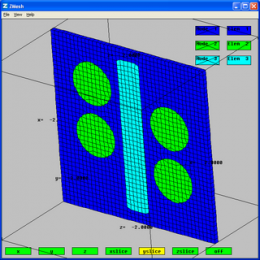Finite element code released

'Zinc' is a free, finite element code capable of solving a wide range of physics and multiphysics problems.
Zinc can solve nearly any physics system which can be expressed in terms of second order differential equations. Example physics systems include: electrostatics, magnetics, elastic theory, thermal fluctuation, diffusion. Zinc is also capable of solving any combination of these physics theories, giving advanced multiphysics simulations.
At National Physical Laboratory, Zinc has been successfully applied to a variety of multiphysics problems including electric, elastic, piezoelectric, multiferroic and fuel cells systems. It can also solve all the most common scenarios in electromagnetics, mechanics, thermodynamics, fluid flow and heat/material diffusion.
One of Zinc's strengths is its ability to link to arbitrary code prepared by the user. This allows for very advanced simulations such as hybrid models where part of the simulation is modelled using atoms and part with finite elements. This linkage is achieved without the user having to know anything about the internal workings of Zinc (the user is completely shielded from Zinc's internal functions and variables and free to concentrate on the physics). User-written functions can be prepared in any programming language.
More information: Available at: interactive.npl.co.uk/zinc
Provided by National Physical Laboratory














